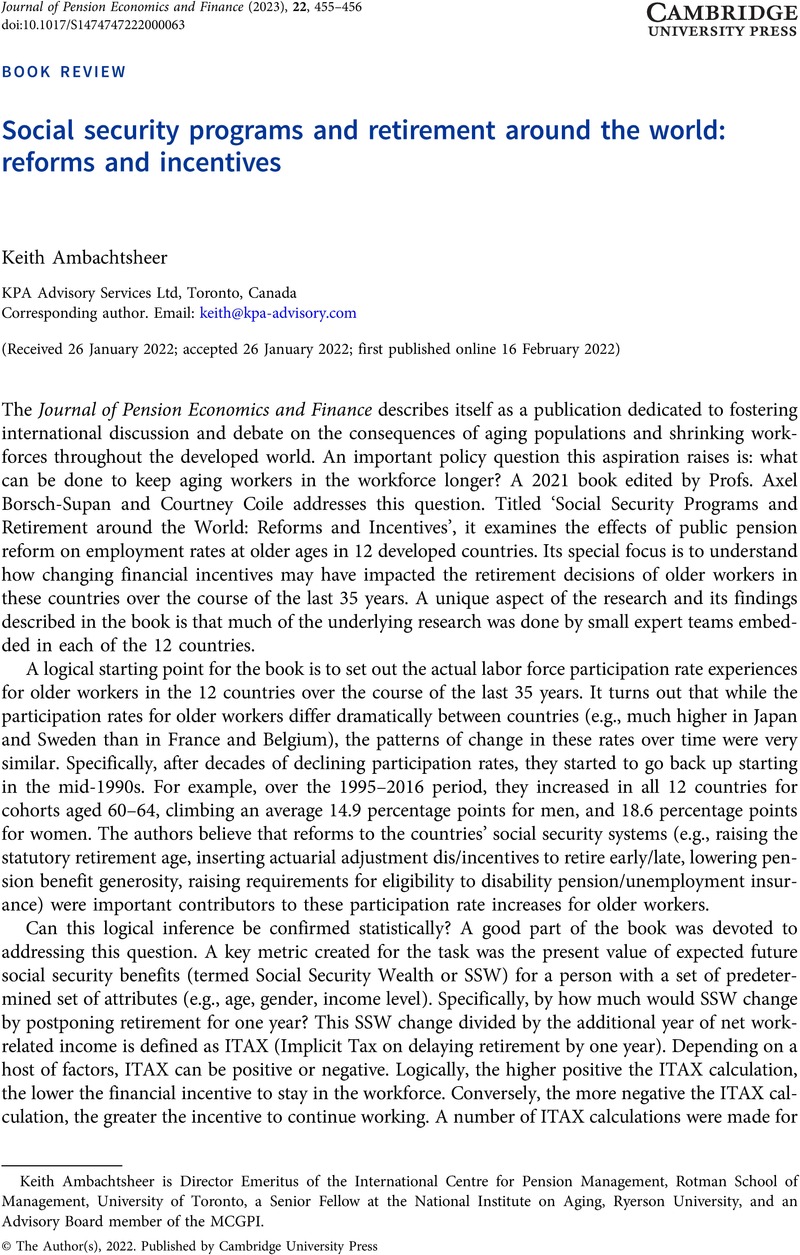No CrossRef data available.
Social security programs and retirement around the world: reforms and incentives
Review products
Social security programs and retirement around the world: reforms and incentives
Published online by Cambridge University Press: 16 February 2022
Abstract
An abstract is not available for this content so a preview has been provided. Please use the Get access link above for information on how to access this content.

- Type
- Book Review
- Information
- Copyright
- Copyright © The Author(s), 2022. Published by Cambridge University Press
Footnotes
Keith Ambachtsheer is Director Emeritus of the International Centre for Pension Management, Rotman School of Management, University of Toronto, a Senior Fellow at the National Institute on Aging, Ryerson University, and an Advisory Board member of the MCGPI.


